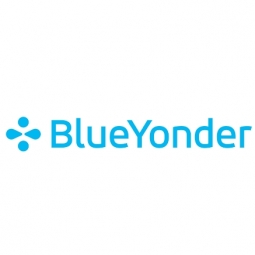Download PDF
Armada Cuts Disruption Response Times by 65%
Technology Category
- Platform as a Service (PaaS) - Connectivity Platforms
Applicable Industries
- Food & Beverage
Applicable Functions
- Logistics & Transportation
Use Cases
- Supply Chain Visibility
- Predictive Maintenance
Services
- Cloud Planning, Design & Implementation Services
- Data Science Services
The Challenge
Armada, a supply chain solutions provider with approximately $4.0 billion in revenues, was focused on enabling next-generation supply chain orchestration solutions. The company wanted to create a digital thread across the network that would enhance real-time visibility and connectivity of network stakeholders, leading to greater agility and responsiveness in the face of inevitable disruptions. Armada moves nearly 100 million cases annually and approximately 450,000 truckloads with speed and agility. One in eight US consumers benefits from Armada’s services each day. The company was looking for a solution that could help them maximize the value of its end-to-end solutions for existing clients while also attracting new ones.
About The Customer
Armada is a supply chain solutions provider with approximately $4.0 billion in revenues. The company provides services to many of America’s largest restaurant chains. With locations nationwide, Armada moves nearly 100 million cases annually and approximately 450,000 truckloads with speed and agility. One in eight US consumers benefits from Armada’s services each day. The company was focused on enabling next-generation supply chain orchestration solutions to maximize the value of its end-to-end solutions for existing clients while also attracting new ones.
The Solution
Armada partnered with Blue Yonder as an early adopter of Luminate Control Tower for enablement of Armada’s Profitable Response Orchestration™ solution. Powered by artificial intelligence (AI) and machine learning (ML), this solution monitors conditions across the network in real time. By digitally connecting Armada’s orchestrators with all network stakeholders, Luminate Control Tower enables a fast, coordinated response when the unexpected occurs, adding value via cost savings and continuity of supply. Luminate Control Tower provides a real-time, unified view of events and critical alerts that help Armada connect the dots when an exception occurs anywhere in the network. Armada can confidently predict the impacts on service levels and costs before orchestrating a corrective action.
Operational Impact
Quantitative Benefit
Related Case Studies.

Case Study
The Kellogg Company
Kellogg keeps a close eye on its trade spend, analyzing large volumes of data and running complex simulations to predict which promotional activities will be the most effective. Kellogg needed to decrease the trade spend but its traditional relational database on premises could not keep up with the pace of demand.

Case Study
HEINEKEN Uses the Cloud to Reach 10.5 Million Consumers
For 2012 campaign, the Bond promotion, it planned to launch the campaign at the same time everywhere on the planet. That created unprecedented challenges for HEINEKEN—nowhere more so than in its technology operation. The primary digital content for the campaign was a 100-megabyte movie that had to play flawlessly for millions of viewers worldwide. After all, Bond never fails. No one was going to tolerate a technology failure that might bruise his brand.Previously, HEINEKEN had supported digital media at its outsourced datacenter. But that datacenter lacked the computing resources HEINEKEN needed, and building them—especially to support peak traffic that would total millions of simultaneous hits—would have been both time-consuming and expensive. Nor would it have provided the geographic reach that HEINEKEN needed to minimize latency worldwide.

Case Study
Energy Management System at Sugar Industry
The company wanted to use the information from the system to claim under the renewable energy certificate scheme. The benefit to the company under the renewable energy certificates is Rs 75 million a year. To enable the above, an end-to-end solution for load monitoring, consumption monitoring, online data monitoring, automatic meter data acquisition which can be exported to SAP and other applications is required.

Case Study
Coca Cola Swaziland Conco Case Study
Coco Cola Swaziland, South Africa would like to find a solution that would enable the following results: - Reduce energy consumption by 20% in one year. - Formulate a series of strategic initiatives that would enlist the commitment of corporate management and create employee awareness while helping meet departmental targets and investing in tools that assist with energy management. - Formulate a series of tactical initiatives that would optimize energy usage on the shop floor. These would include charging forklifts and running cold rooms only during off-peak periods, running the dust extractors only during working hours and basing lights and air-conditioning on someone’s presence. - Increase visibility into the factory and other processes. - Enable limited, non-intrusive control functions for certain processes.

Case Study
Temperature Monitoring for Restaurant Food Storage
When it came to implementing a solution, Mr. Nesbitt had an idea of what functionality that he wanted. Although not mandated by Health Canada, Mr. Nesbitt wanted to ensure quality control issues met the highest possible standards as part of his commitment to top-of-class food services. This wish list included an easy-to use temperature-monitoring system that could provide a visible display of the temperatures of all of his refrigerators and freezers, including historical information so that he could review the performance of his equipment. It also had to provide alert notification (but email alerts and SMS text message alerts) to alert key staff in the event that a cooling system was exceeding pre-set warning limits.

Case Study
Coca-Cola Refreshments, U.S.
Coca-Cola Refreshments owns and manages Coca-Cola branded refrigerators in retail establishments. Legacy systems were used to locate equipment information by logging onto multiple servers which took up to 8 hours to update information on 30-40 units. The company had no overall visibility into equipment status or maintenance history.





